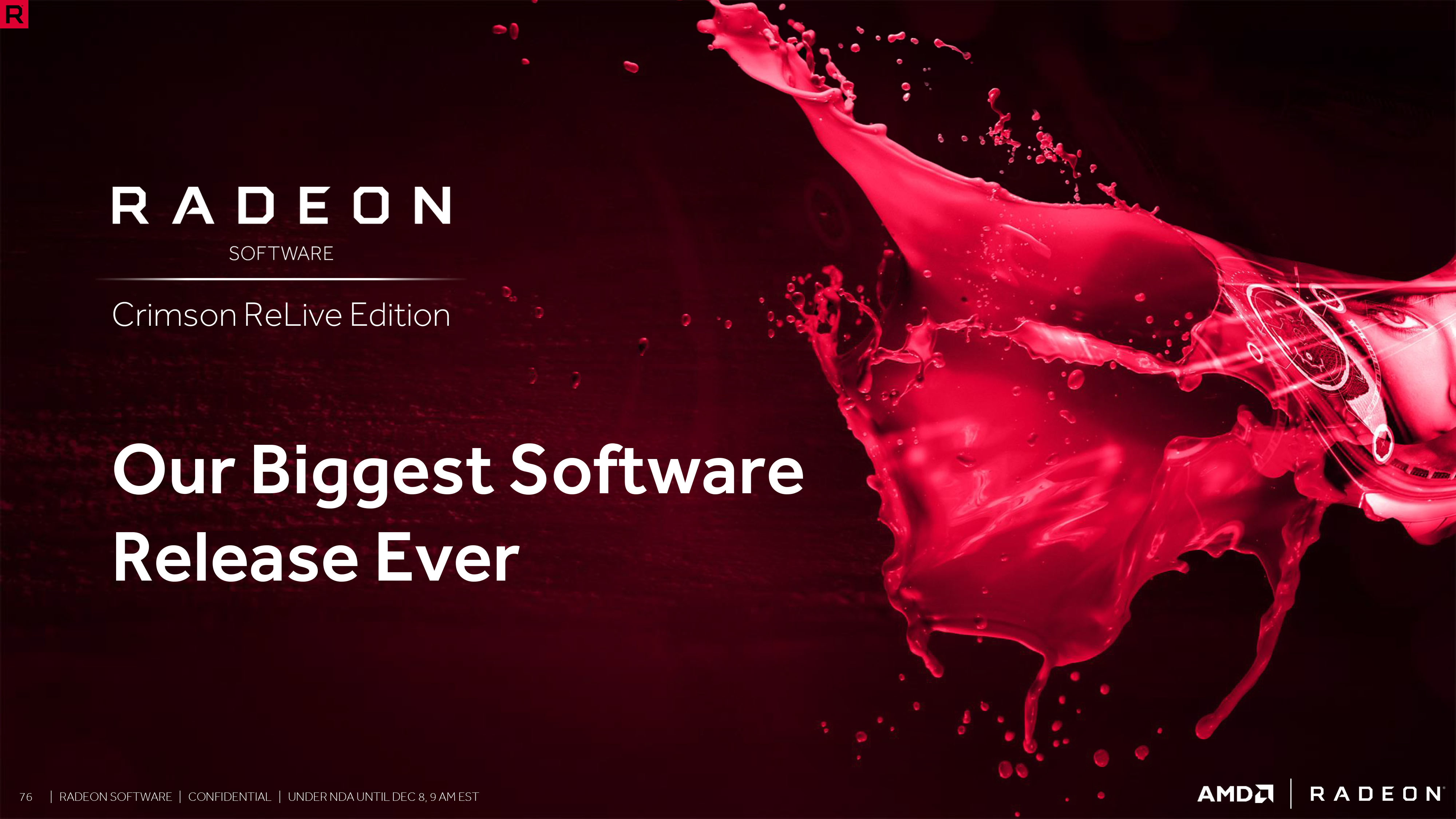

Furthermore, it now works with multi-GPU setups, XConnect (laptops connected to an external GPU dock), and, most importantly, laptops themselves. 37 games are supported now, to be precise, with more inbound. Radeon Chill, which saves power by dynamically regulating frame rate based on what you and the game are doing, now supports Direct X 12 and Vulkan titles.

The driver's built-in overclocking utility, Radeon WattMan, now offers memory underclocking (for power saving or increasing core overclocking headroom) for the RX 500 series, as well as power state control for the RX 400 and RX 500 series. Users will also note a few tweaks to notifications, and audio controls have been enhanced as well, meaning you now have microphone volume control and push-to-talk supported on both mouse and keyboard. Optimisations have been applied to boost performance too, particularly for cards with a 4GB frame buffer, with AMD's own figures pointing to an overhead reduction of up to a third. AMD has also added camera transparency to stop your overlay blocking HUD or UI elements for your viewers when streaming. The maximum recording bitrate of ReLive has been doubled to 100Mbps (doesn't apply to streaming). You can now control colour temperature, brightness, hue, contrast, and saturation independently for each of your screens provided you're running Windows 7 or 10 and using a card that falls into the RX 400 or RX 500 series.

The second most voted for feature was per-display colour control, and this too has been added. With this release, that interface is finally retired as everything moves into Radeon Settings – this was apparently the most requested feature from users. When AMD first launched Crimson, it developed a new Qt-based UI for its driver settings called Radeon Settings, but some remained in the old Catalyst Control Centre interface (rebranded Radeon Additional Settings). There's plenty to cover, so we'll dive right in.

AMD is no stranger to major driver releases nowadays the Crimson ReLive driver was the major launch of 2016 – a direct reference to the new-at-the-time Crimson ReLive software used for streaming, sharing, and recording gameplay – and now, nearly eight months later as AMD gears up for its Vega release, ReLive lives again in driver 17.7.2.


 0 kommentar(er)
0 kommentar(er)
